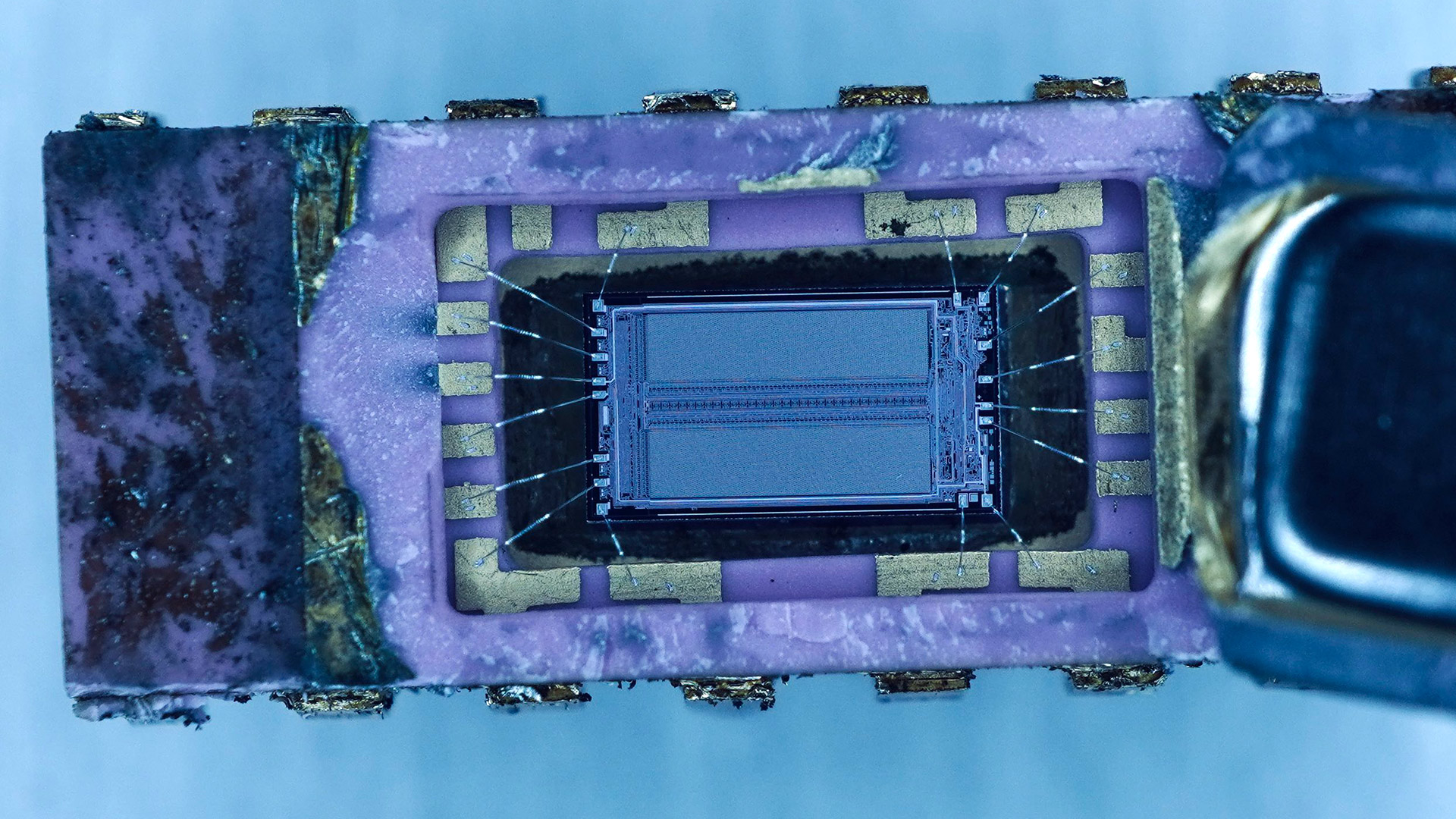CPU collector peels the lid off a Soviet-era ‘fish can’ chip to peer inside with multiple microscopes — K565RU3 was a Cold War-era clone of Western chips that powered Apple II, Commodore PET, and original IBM PC
The K565RU3 is a 16KB DRAM IC that was cloned from Western chips found in classic machines like the Apple II, Commodore PET, and original IBM PC.

A fascinating Soviet-era retro electronics artifact was dissected and micrographed by CPU collector CPU Duke this weekend. Under the enthusiast’s selection of microscopes this time was the ‘K565PY3.’ The IC under scrutiny was a Dynamic RAM chip with a 16KB capacity, and this particular sample was believed to have come from the Mezon factory in what is now Moldova. For context, we think the K565PY3 is a reverse-engineered clone of the 1970s/80s era Intel-designed 4116 DRAM chip.
#WeekendDieShots!Thanks to @RetroNora7734 for sending over some Russian ICs. Today, I started with the 16K × 1-bit Dynamic RAM made in Moldova probably at “Mezon” factory.A 🧵…The lid was really solid… had to open it like a fish can… pic.twitter.com/gmhUx1CHmFNovember 2, 2025
The first thing CPU Duke noticed about the K565PY3 was its sturdy “fish can” construction. However, it didn’t take long to pop that off and begin the in-depth silicon survey, starting with a stereo microscope in light reflection mode. Immediately clear are the chip’s structures and multitude of memory cells (of course).
CPU Duke dove deeper, with their ring light making it possible to peer into structures below the surface layer. Did they count them all? Our intrepid silicon sleuth commented that the IC storage consisted of “a 128 x 128 matrix of storage cells.”
Next up, CPU Duke switched to their metallurgical microscope to reveal a different level of detail. It was noted that some Cyrillic etching could be translated as the English word “Tempo,” indicating this was fast DRAM. Further visual analysis highlighted the “CAS (Column Address Strobe), RAS (Row Address Strobe), and the row decode section of the DRAM.” Techy folks who’ve spent any time tuning their modern PC memory will be familiar with terms like CAS and RAS values, and their relevance to memory and system performance.
The K565PY3 was a Cold War era Intel RAM chip clone
CPU Duke provided a little background detail about the provenance of this ‘fish can’ memory chip. Our investigations make it pretty clear this is a clone or reverse-engineered version of the Intel 4116 DRAM chip, which roamed the Earth from the late 70s to early 80s.
In the West, versions of the Intel 4116 were used in legendary computers, such as the Apple II, ZX Spectrum, Commodore PET, and IBM PC – as well as in classic arcade machines like Defender and Missile Command. CPU Duke’s sample from the Cold War-era USSR could have been plucked from a Soviet home computer – again, likely a clone of a Western machine. Contemporary Soviet embedded systems and industrial electronics would also use 4116 DRAM IC clones.
The Intel 4116 DRAM wasn’t just available from Intel in the West. Electronics makers also often sourced these ICs from makers like Texas Instruments and Mostek. It is thought that the Soviet K565PY3 was reverse-engineered from a Mostek sample. Whichever model you might find, in used and salvaged hoards, these truly old ICs should be functionally identical.
Get Tom's Hardware's best news and in-depth reviews, straight to your inbox.

Follow Tom's Hardware on Google News, or add us as a preferred source, to get our latest news, analysis, & reviews in your feeds.

Mark Tyson is a news editor at Tom's Hardware. He enjoys covering the full breadth of PC tech; from business and semiconductor design to products approaching the edge of reason.
-
lrtullos Reply
I worked for Mostek (1974-1985) and we knew the Soviets copied the MK4116 DRAM as it contained a bit of non-functional circuitry that was included for detection.Admin said:A fascinating Soviet-era retro electronics artifact has been dissected and micrographed by a CPU collector.
CPU collector peels the lid off a Soviet era ‘fish can’ chip to peer inside with multiple microscopes — K565RU3 was a Soviet-era clone of Western c... : Read more
Many years later, we hired an ex-Soviet semiconductor engineer who was knowledgeable of the project although I don't recall if he was directly involved or not. Alex, if you're by chance seeing this please jump in! -
Gillerer Since it's Cyrillic "К565РУ3", the model name should probably be transcribed in Latin alphabet as "K565RU3".Reply -
Rando99 Regarding the packaging, which you describe as "unwrapping a fish can".. is this an indication that this particular module was intended for a more durable lifecycle? Ie: ruggedized for field use, or hardened against EMP for use in military or aerospace installations?Reply